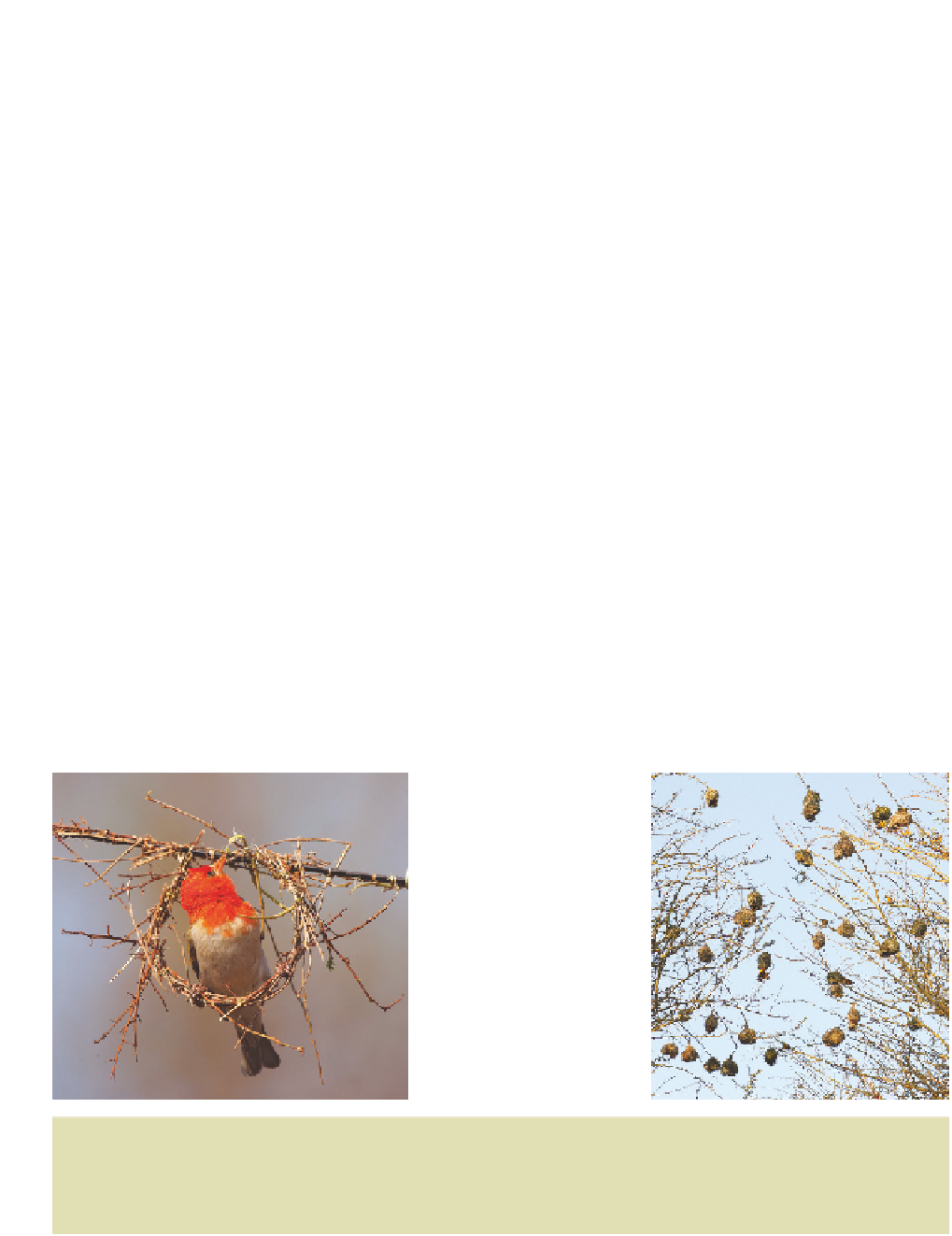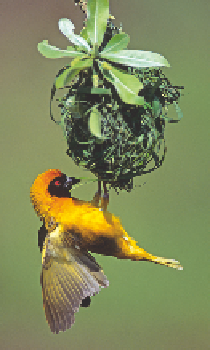Biology Reference
In-Depth Information
remain in the nest until they can fly (around six weeks of age). With no chances that their
own chicks will wander off and become mixed up with other chicks, there is no need for
parents to recognize their young soon after hatching. Cullen showed experimentally that
kittiwakes accepted foreign young on their nests and did not recognize their own young
until much later on, just before fledging. Finally there was no need for parental food calls to
announce the arrival of food because the young were not hidden.
The different traits of black-headed gulls and kittiwakes, therefore, provide strong
support for our hypothesis that these various suites of behaviour have evolved as
adaptations in response to predation differences between the two sites.
Social organization of weaver birds
The gull comparison involved just two species. Including a larger number of species will
obviously improve the power of the analysis. The first person to attempt a systematic
comparative analysis of social organization was John Crook (1964), who studied about 90
species of weaver birds (Ploceinae). These are small sparrow-like birds which live throughout
Africa and Asia, and although many look rather alike there are some striking differences in
their social organization. Some are solitary, some go around in large flocks. Some build
cryptic nests in large defended territories while others cluster their nests together in colonies.
Some are monogamous, with a male and a female forming a permanent pair bond; others
are polygamous, the males mating with several females and contributing little to care of the
offspring. How can we explain the evolution of this great diversity in behaviour (Fig. 2.2)?
Crook's approach was to search for correlations between these aspects of social
organization and the species' ecology. The ecological variables he considered were the
type of food, its distribution and abundance, predators and nest sites. His analysis
showed that the weaver birds fell into two broad categories (Table 2.2):
Social behaviour
correlated with
diet
(a)
(b)
(c)
Fig. 2.2
Differences in social organization in weaver birds. (a) Red-headed weaver
Anaplectes melanotis
; a
woodland insectivore which often breeds in monogamous pairs on dispersed territories. (b) Southern masked
weaver
Ploceus vellatus
; a savannah seed-eater which nests in colonies and is polygynous. (c) Village weaver
Ploceus cucullatus
, another colonial, polygynous savannah species. All photos © Warwick Tarboton.






























